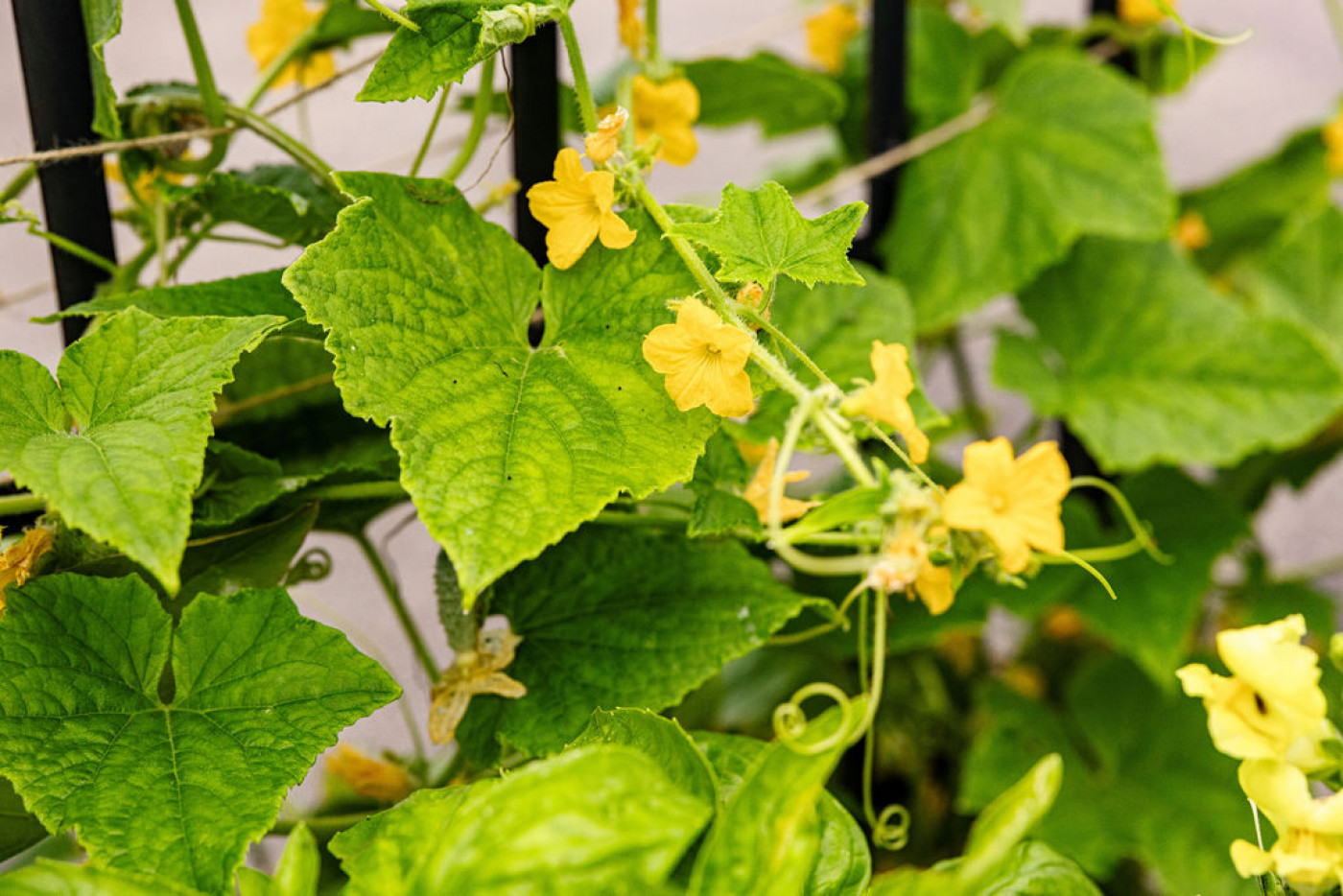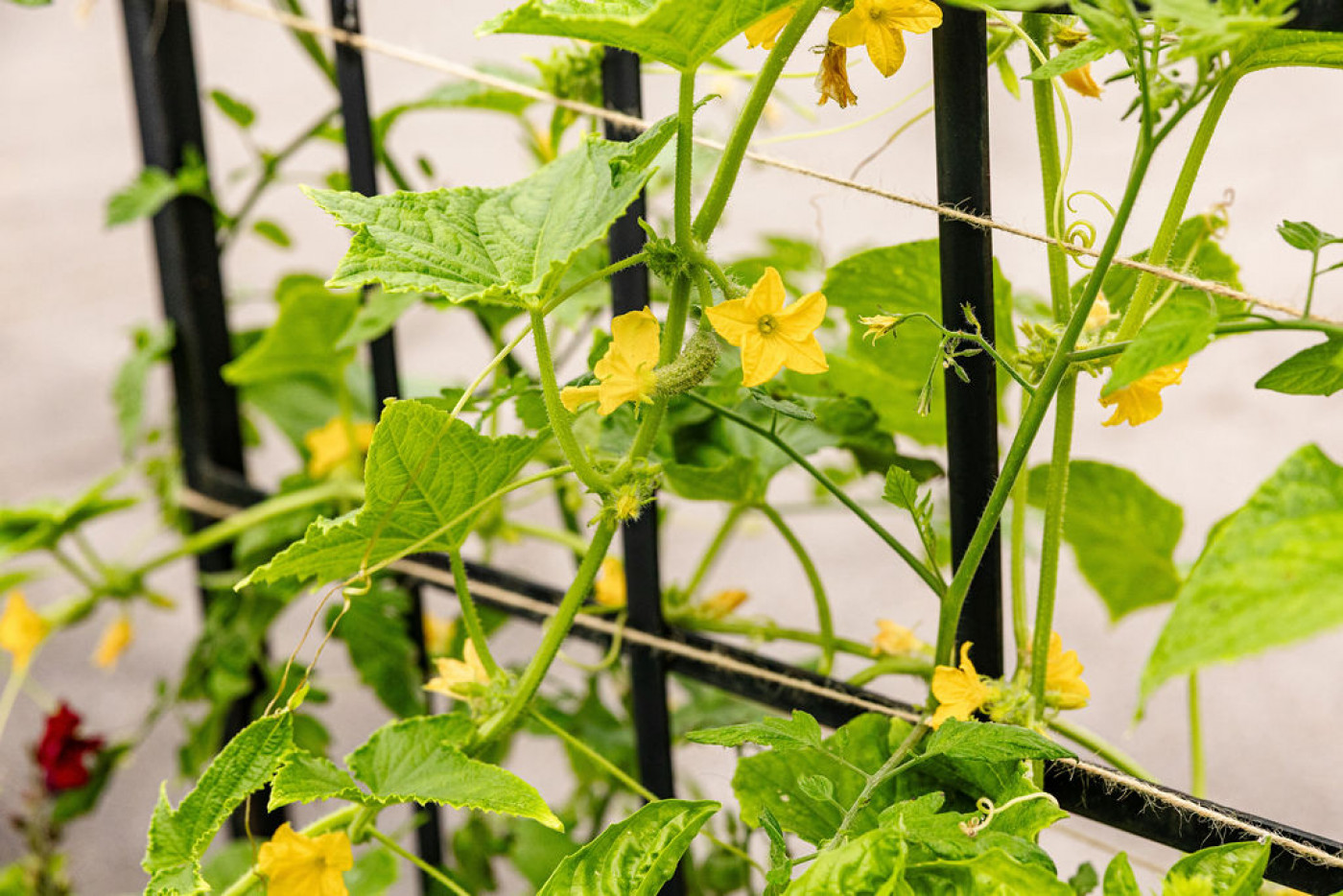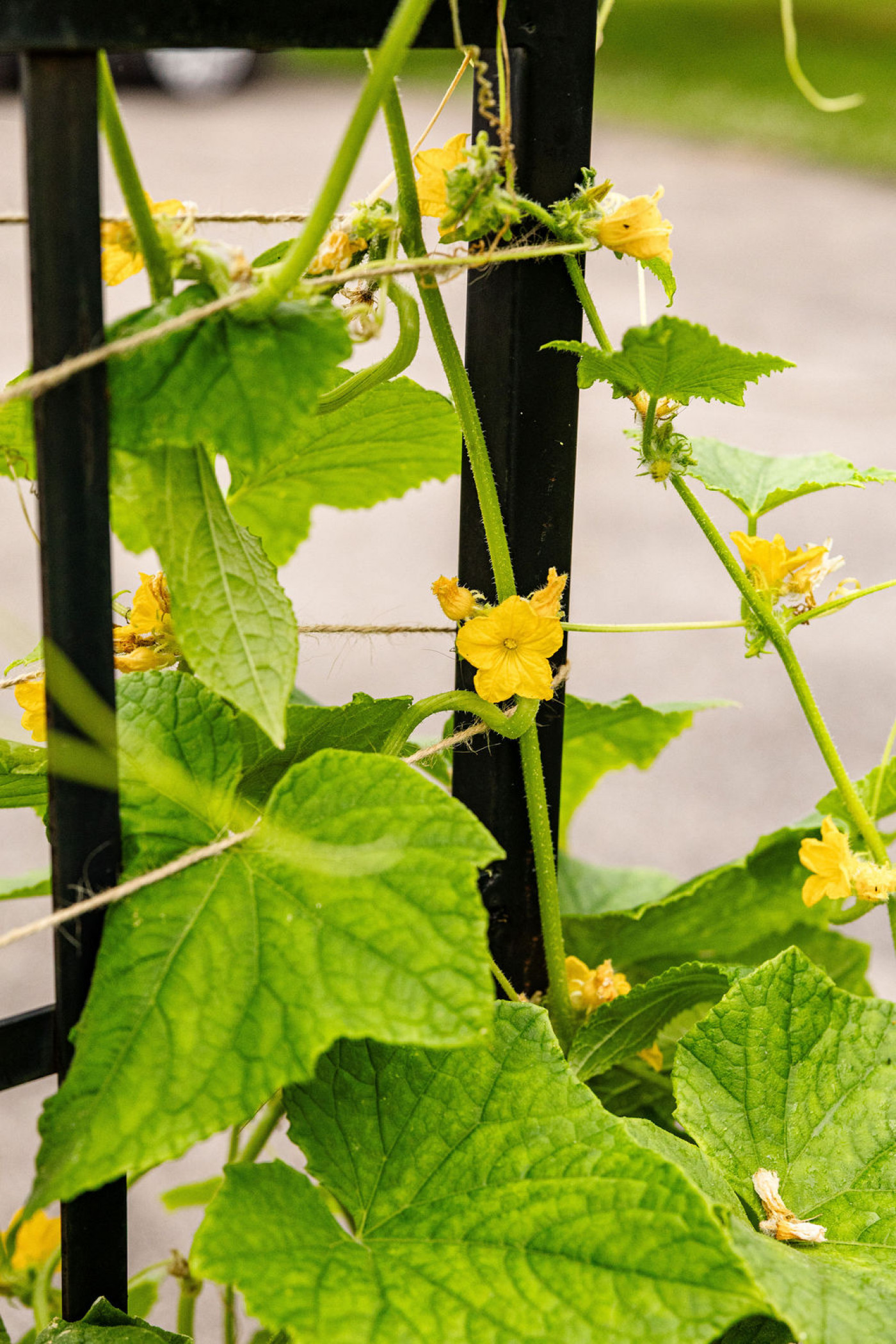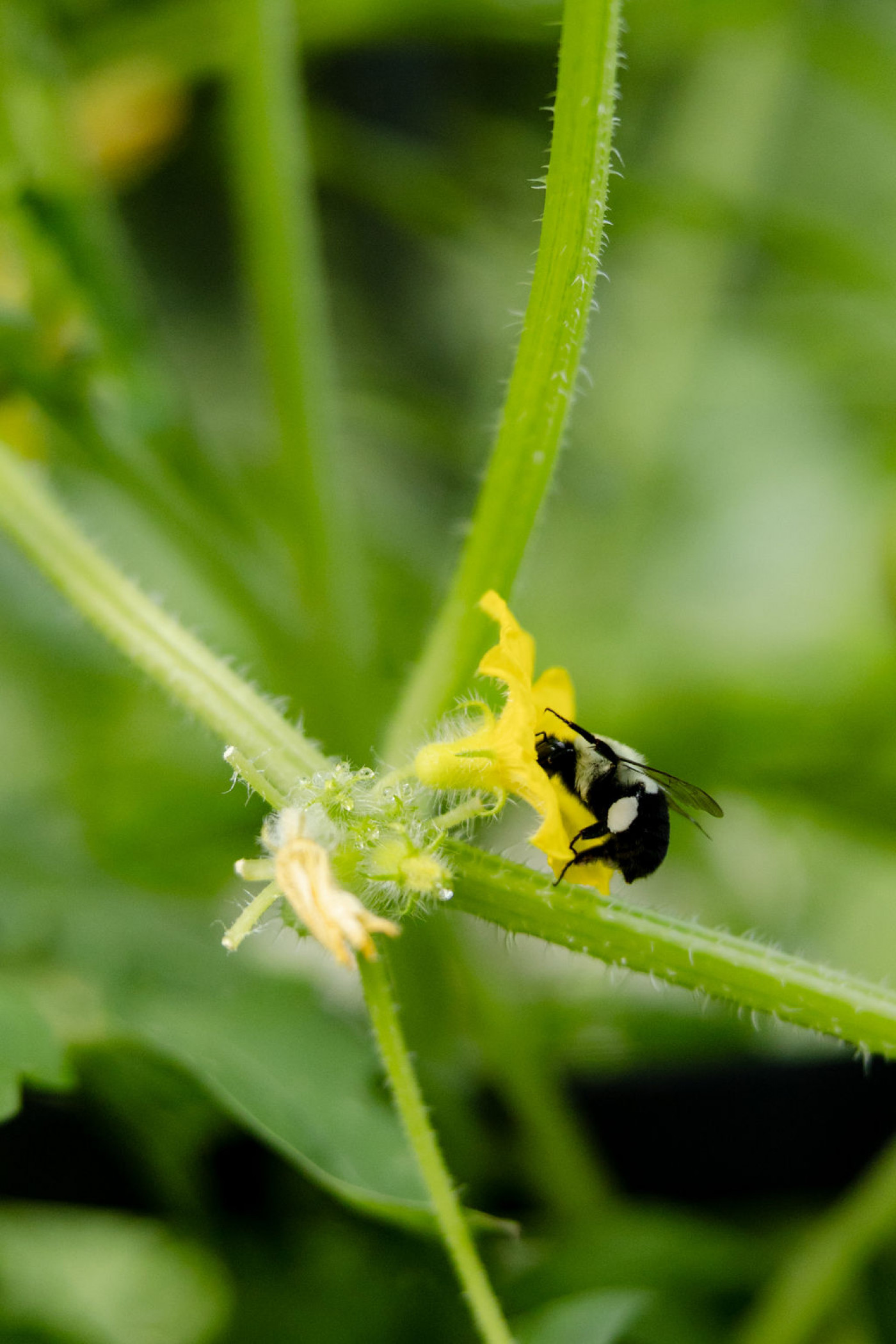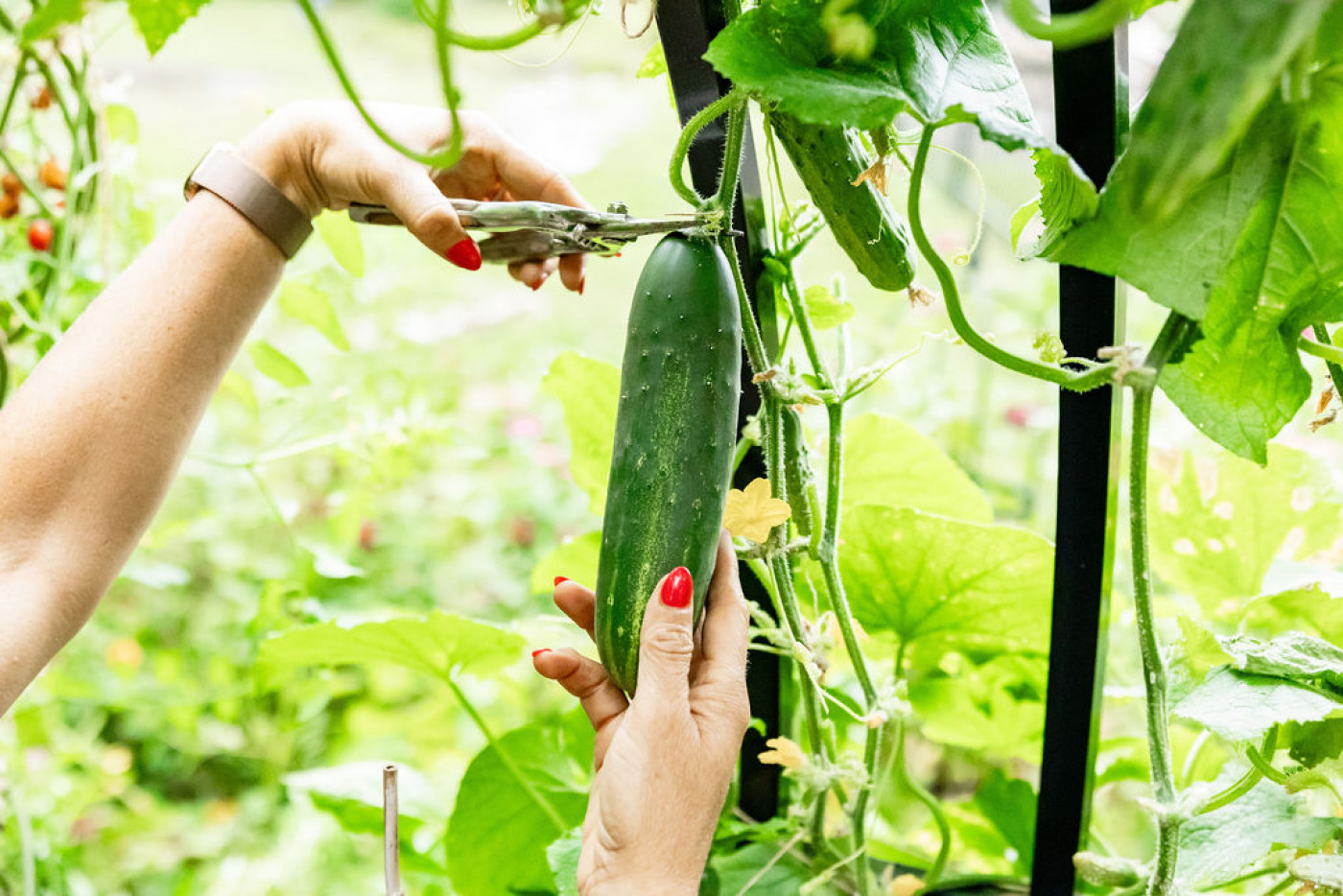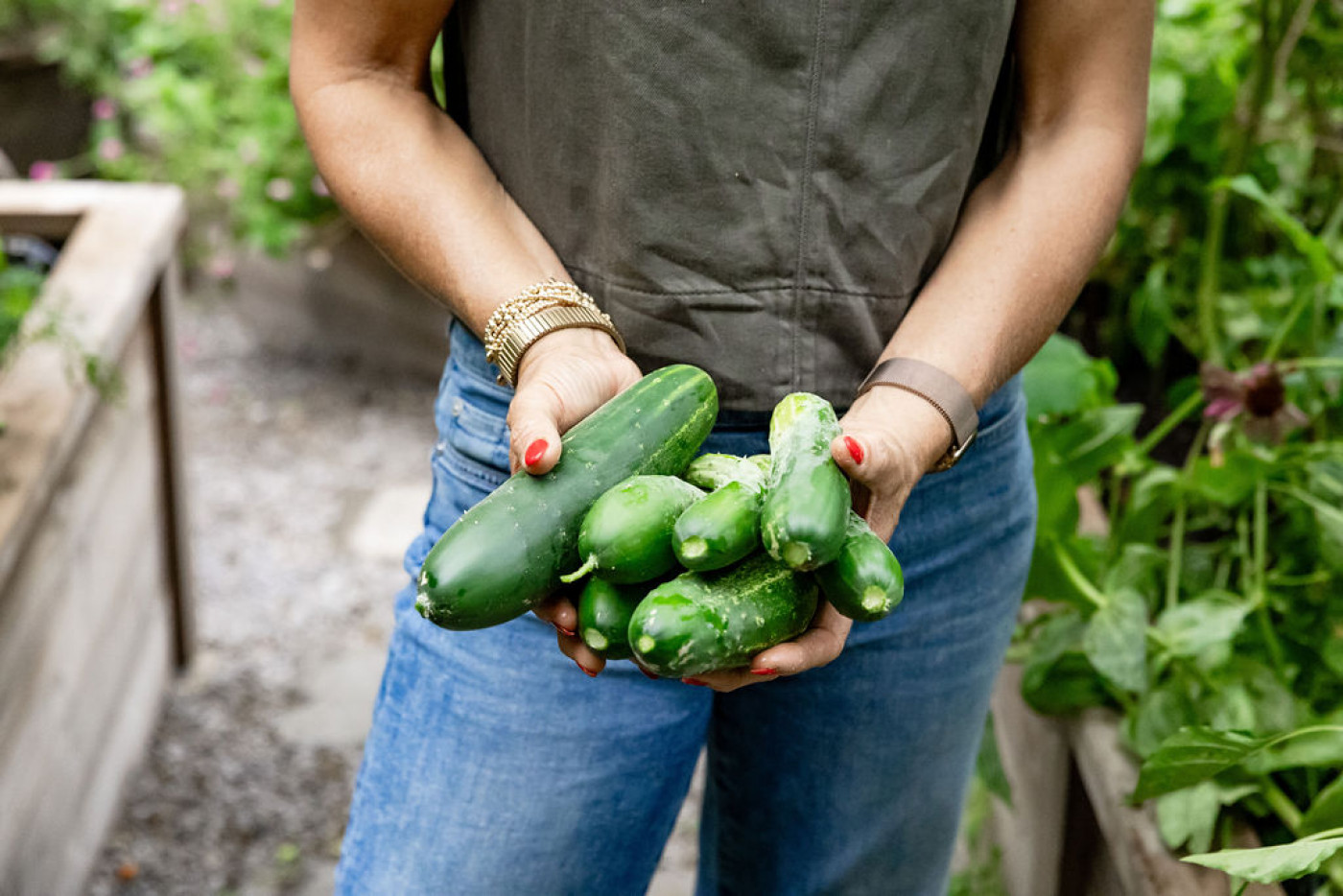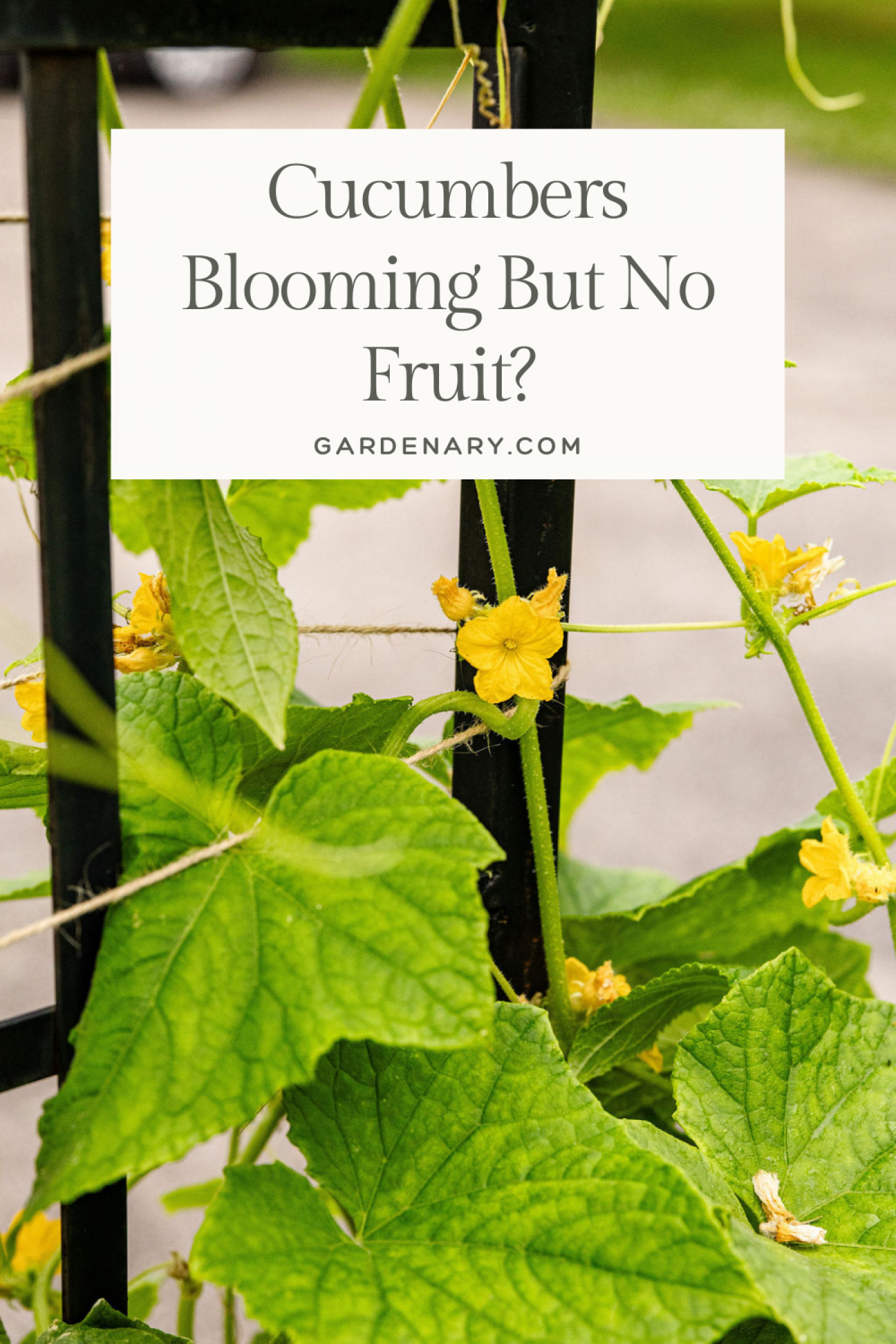Is your cucumber plant covered in bright yellow blooms but showing zero signs of fruit? Same. But don't worry—this is one of the most common cucumber-growing conundrums, and it has three simple fixes. Once you understand them, you'll be on your way to harvesting crunchy cucumbers in no time.
Let me take you into my mom and dad's brand-new kitchen garden. (If you missed the install, you have to check out that video next!) About 45 days ago, we planted cucumber seeds along the trellis using our Easy Garden Kit. They were among the first seeds to sprout and have been climbing ever since (which is exactly why I love starting cucumbers from seed). The vines are lush, the tendrils are twirling, and everything looks incredibly promising. But this week, Mom called in a cucumber crisis: "Niccole, the plants look amazing, but I haven't harvested a single cucumber!"
Sound familiar? You're not alone. This happens to my clients, my friends, and even to me. So let's walk through the three key factors that might be standing between your blooms and your bounty.


Start Your Garden the Easy Way
Get growing with 10 foolproof seed varieties, a 120-page gardening guide, planting plans, and step-by-step video lessons—all designed to help you succeed. The Easy Garden Kit makes it simple, fun, and affordable to bring fresh food and flowers to your backyard.
At a Glance
- Cucumber vines may bloom beautifully without producing fruit, but the fix usually comes down to three things: flower type, pollination, and nutrition.
- By identifying male and female flowers, supporting pollination (with bees or a paintbrush), and giving your plants the nutrients they need, you can turn blooms into a steady cucumber harvest.
Prefer to Watch?
Factor One: Know Your Flowers
Here's the big surprise: cucumber plants produce two kinds of flowers—male and female. They're both yellow, but only one will give you fruit.
- Male flowers have a straight stem behind them and no swelling.
- Female flowers have a tiny bulge just behind the bloom that looks like a baby cucumber.
Early in a cucumber plant's life, most of the flowers it produces are male. On my mom's plants, a whopping 90 percent were male at our first check-in. That’s totally normal. The female flowers show up as the plant matures, usually within 10 to 25 more days of growth.
What to do: Check your flowers and start identifying which ones are male and which are female. If you're mostly seeing male flowers, just be patient, the females are on their way.
Factor Two: Pollination Power
Let’s say it’s been 55 to 60 days, and your cucumber plant is flowering like crazy but still not producing fruit. The likely culprit? Lack of pollination.
Cucumbers rely on pollen transfer from male to female flowers. And not just once—pollen often needs to be moved multiple times throughout the fruit's growth for it to fully develop.
- Natural pollination happens through bees, butterflies, and other beneficial insects.
- Manual pollination can be done with a small paintbrush. Gently collect pollen from a male flower and dab it onto the female flower.
At my mom’s house, the garden was brand new, just grass and arborvitaes. No native plants, no flowers yet, and therefore, no bees. While we’re planning to add plenty of pollinator-friendly blooms, for now, we're doing the bees' job ourselves with a paintbrush. Curious how to do it? I’ve got a step-by-step guide on hand-pollinating cucumbers right here.
Pro tip: Plant native flowers like zinnias around your cucumber plants to naturally invite pollinators. They’re included in the Easy Garden Kit and are a great companion to cucumbers.
Factor Three: Feed Your Fruit
So you've got female flowers and you're pollinating, but still no cucumbers? It's time to talk nutrition.
Cucumbers need:
- Nitrogen for leafy growth (Need a boost? Try planting bush beans—they’ll add nitrogen to the soil and make excellent cucumber companions.)
- Potassium for strong stems
- Phosphorus for fruit and flower development
Mom's plants were thriving in green growth, which told me nitrogen and potassium weren’t the issue. But phosphorus? Possibly lacking.
How to add phosphorus:
- Mix in some finished compost around the base of the plants
- Add organic amendments like bone meal or blood meal
- Use well-aged chicken manure
While you're at it, do a little pruning. Remove the lower leaves below the first flower. This tells the plant to focus less on growing leaves and more on finishing fruit. If you’d like more tending tips for your organic garden, you can read them here.
Recap: The 3-Step Fix
- Check your flower types – Wait for those female flowers to show up.
- Ensure pollination – Let the bees help or step in with a brush.
- Boost nutrition – Add phosphorus-rich compost and prune for focus.
Cucumbers are one of the easiest plants to grow from seed, which is exactly why they're part of the Easy Garden Kit. In less than 65 days, you can go from seed to harvest. Not sure when to pick? I've got tips on how to tell when cucumbers are ready to harvest right here. Just follow these three steps, and your kitchen garden will be bursting with cucumbers before you know it.
Want more cucumbers and more pollinators? Plant zinnias. Check out this post on growing zinnias from seed, and join Mom and me as we get those flowers started. Let’s make your garden bloom and your cucumbers boom!
Gardening Made Easy
Sources
The Patterns of Male and Female Flowers in Cucumber — Plants (PMC)
Optimised fertigation improves yield and quality of cucumber — ScienceDirect
The Effect of NPK on Growth, Yield and Quality of Cucumber (Cucumis sativus L.) — Journal of Pharmacognosy and Phytochemistry

